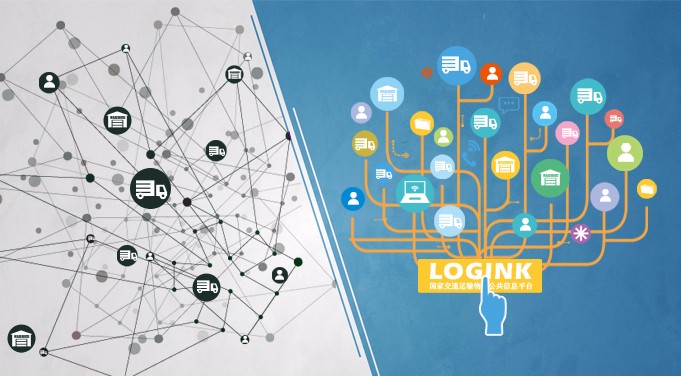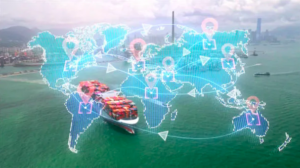With the increasing development of smart supply chains and logistics and the desire to take these to a global standard, those managing the process need to be aware of what lies beneath the surface when adopting data sharing and aggregation platforms. Local business and communities need to be aware of the technology and digital infrastructure being used to connect and integrate global trade routes.
Of particular concern is where global trade data interfaces with China and the Belt Road Initiative (BRI) participants. It is prudent for a proper and thorough due diligence of the digital network and data exchange protocols rather than taking the publicists for China at their word. It is becoming increasingly important to strip away corporate layers and veneers when conducting business and trade with today’s China, particularly as the new China has taken away the separation of State and economy/civil society.
When taking closer look into smart and globally integrated supply chains, it is apparent that China has taken a significant leadership role with regards integrated smart port and logistics. Their level of seamless data integration within their data sharing and exchange platforms have gained traction within global supply chains and logistics. Cyber integration is greater than what most global organisations and Governments understand. This should raise questions around not just cyber security, but potential data manipulation used to disrupt global supply routes.
Current smart initiatives, particularly those involving ports, appear to understand China’s current digital data aggregation platform. Some have heard of it, but few realise that this platform, Logink, has been operational for over a decade. It is embedded within smart port ecosystems and sits under several CCP controlled State departments. Understandably, this complex control structure has made it difficult for several ports to appreciate that they are already docked into the Logink platform.
Logink development has gone largely under the radar, particularly as the data sharing exchange network has been subsumed into the BRI and co-ordinating Digital Silk Road (DSR) initiatives. The lack of awareness has seen a level of undetected big data leakage from smart port and supply chain ecosystems, particularly where those ecosystems overlap with BRI participating countries.
Does this deeply embedded data sharing network point to the emergence of a singular, closed digital trade system that elevates China to hegemon status? Does the lack of knowledge and understanding of China’s DSR ambition provide a digital back door for China’s closed digital network to replace the West’s open data exchange platforms?
Heading towards a single, closed digital trade platform?
Whilst current “Western” software designers talk up the progress being made with regards Smart Port and Container networks, they showcase the increasingly growing divide between “West” open digital networks as opposed to China’s closed DSR structure. Not only is the debate between these differing digital ecosystems different in terms of content, but it is significantly different in terms of policy decision making.
However, what is of concern is that the “open” system advocates are unknowingly contributing to the creation of a single closed digital trade system by being docked into Logink. In some cases, they may not be aware of this connection but, in some cases, it has been blind faith that has driven connection to Logink.
Some context around the digital divide
Typically, the “West” talk in terms of data silos within an open system, gravitating towards data exchange across these silos. This includes getting to a level of data standardisation that would allow for the development of robust APIs to securely exchange this data.
The maritime sector, as a key component in global supply chains, has embraced this by progressing beyond narrow data silo building looking beyond the “shipping-based ecosystem”. They are increasingly placing themselves within a “Smart Port and City ecosystem”. There has also been a shift from identifying a need to share data, not just with other ports, but with shore-based operations. The emergence of Ports as multi-dimensional hubs is a positive development.
Unfortunately, under the emerging “West open system” scenario, the detail and policy debate are relatively narrowly defined, often phrased in politically driven outcomes. There does not appear to be a comprehensive look at the full scope of the digitally integrated trade and supply ecosystem. For example, the EU has narrowed its digital focus in the maritime sector to the use of technology to reduce shipping and transport carbon footprints i.e., an environmental “green view”. With this narrow focus comes dangers, as it does not consider how big data that is shared and aggregated such that it disrupts both domestic and global supply chains.
It appears that the EU digital framework is framed to give maximum transparency with regards shipping i.e., location etc, in real time. The intent is that this information is used to facilitate efficient decision making with regards planned connections between intermodal transport suppliers, docking and equipment utilisation. The EU model translates improved equipment allocation and utilisation into a reduction of cargo bottlenecks, reduced time in transit and congestion. The net result is a reduction of Co2 emissions across the whole supply chain network.
The EU and others have encouraged and supported several initiatives with regards these network structures to support the “greening” of these transportation systems. Initiatives include: The International Port Community Systems Association (IPCSA), The International PortCDM Council and the DCSA Just in Time Port Call to name but a few.
The focus has been on the standardisation of data enabling data sharing to empower the use of real time information to improve transportation efficiency. This noble cause, albeit very narrow in scope, has created the distraction that has made it easier for EU Ports such as Rotterdam, to “dock” into the Logink platform.
Those within the EU Port eco-systems are happy to talk about the development of an open port multi-dimensional network. For example, Rotterdam is a leader in developing an open global port ecosystem and are proud of the level of information and data that they share with the likes of China Merchants Ports or Hutchison Ports. This data sharing is done on the basis that the “live” data interchange will facilitates efficient docking, offloading, inter-modal connections and in the process achieve their emission reductions targets amongst other things.
However, when taking the discussion one level down, and asking what they understand about Logink and China closed digital platform, it is not readily transparent as to where all this big data and information lands. Many concede that they do not fully understand what Logink does or where it fits into the geo-political structure of China. It is conceded that they cannot say what China does with all this big data.
What needs to be known about China’s approach to technology and digital trade
China takes a broader view of the benefits of the emerging digitalisation of global trade. Even before the advent of the BRI and DSR, China operationalised their 1995 notion of Information warfare in 2010. This is when Major General Wang Pufeng introduced the Logink platform. This was at a time when China recognised that world trade had started its transition to a connected and digital economy.
Under the “Open China” policy framework prior to Xi Jinping’s ascension to power, the world’s first real time logistics and supply chain data information sharing warehouse network was developed and introduced. Logink was initially developed as a platform to build up data / information so that China could understand their competitors whilst creating their own digital systems. It may well be that the wide-spread acceptance and conciliatory tone around Logink arose from an earlier “open” China under Deng Xiaoping, with a clear separation of the State and the economy.
As China’s digital ambitions grew as the new China returns to a closed system, Logink was systematically subsumed under layers of bureaucratic shields within the DSR. The aim was not simply to aggregate data but now to develop potential to disrupt supply chains and logistics systems.
Unfortunately, those using Logink have failed to re-evaluate this significant change in direction brought about by Xi Jinping’s new China, Party centrality policy framework. Perhaps they have fallen under the spell of the CPC PR department’s soft diplomacy message of all global citizens being united under a common human destiny.
A re-evaluation of this policy change by Xi Jinping shows a laser focus on aligning research and new technology standards with its national interest. The planned China Standard 2035 is their roadmap for global leadership across global IT / ICT standards rather and not constrained to a specific area or functionality as is found in western based technology plans. It was no surprise when the head of the China National Standardization Management Committee, Dai Hong, summed it up in 2018 by observing that global technical standards were still to be formed, giving China an opportunity to surpass the world.
Logink gave China an open opportunity to define technology standards, export the technology system and ultimately mine the data from those systems to create an advantage for China. The banning of Huawei and Beidou infrastructure into western aligned ICT. China has better understood that it is the interface software that gives the IT infrastructure and operating software, the real power. By not having this level of discussion, the Logink platform has been creeping into the very fabric of the global trade network design.
Going forward
Smart port, city and supply chain network design and configuration is where the discussion needs to focus. This is becoming increasingly urgent, particularly as the Logink platform has been integrated into Alibaba’s Cainiao’s global logistics network. The discussion needs to change, particularly as the creator of Alibaba , Jack Ma, has been sidelined by the CPC.
The Cainiao e-commerce platform docks into Logink, making this interface software a key player in connecting Europe and China digital trading systems. The ultimate mission of the Cainiao network configuration is the full integration of the global e-commerce platform. Logink has spread its influence through Cainiao that has already gained acceptance through 200 Cainiao integrated logistics and service providers operating through 220 countries and regions. Strategically, the Cainiao logistics hub is conveniently based in the Belgium city of Liege and integrates the six e-hubs of: Hangzhou, Hong Kong, Kuala Lumpur, Dubai, and Moscow.
What are the geopolitical and strategic ramifications of Logink?
Within China, Logink is known as the National Transport and Logistics Public Information Platform. It is a platform that allows data aggregation and sharing within China as well as its global trade partners. It is increasingly used as the underlying software platform by BRI participants via China’s DSR strategy. It is administered under the Ministry of Transport but operationally falls under the direction of the China Transport Telecommunications and Information Center (CTTIC). In turn, CTTIC is guided by the CPC and Xi Jinping’s DSR strategy.
CTTIC is a central bureau where all Chinese information technologies intersect. It is responsible for bringing the BRI’s strategy of seamless intermodal transport and trade across the global sea, air, and land into one system and forum. It provides users the data that facilitates supply chain coordination, customs reporting, transportation monitoring and smart logistics. This centralised bureau for data integration of all logistics within China was the first step in bringing together the BRI and DSR. In essence the DSR brings a co-ordinated approach to the BRI through an integration of software platforms (LOGINK) with ICT infrastructure (Huawei 5G Network base stations and subsea optic fibre cables).
This level of data integration allows multiple organisations to communicate and interact under the one platform, with Logink seen as a one stop enquiry service for public logistics information and data resources. This includes retailers, bankers, shippers, and end use customers. Believing it to be a politically benign software application, it has been welcomed into several international authorities, not least of which is the International Port Community Systems Association. Dr Sun (Director General of Logink) played to the benign nature of Logink when saying that their work with the IPSCA was to simplify the logistics visibility in a standardised way that offers the international community the following benefits: standard setting, information interchangeability and data services.
Sold as an “open system” that allows both private and state entities to seamlessly share data and information, it deflected attention away from China inserting itself into the setting of international data standards. A simple example would be setting the data standard for measuring when a vessel is deemed to have arrived at its port of destination. This soft approach morphed into the National Transport and Logistics Information Platform (NTLI) that facilitates information aggregation and sharing. However, it also allows China access authority into several key international ports.
Under the BRI / DSR strategic framework, Logink has been subsumed into the three pillars on which the BRI is building China as a regional hegemon. These three pillars are: 1) COSCO becoming a global integrator of container logistics that will use the Logink platform; 2) Cainiao as a system to build and control global logistics; 3) Chinese technology use across key logistics sectors.
Cainiao as a global logistics system has already been outlined, but it cannot operate without COSCO as a global integrator of container logistics. Adding to Cainiao’s coverage, COSCO covers 200 ports through direct investment. It also has ownership in 51 container ports worldwide. Furthermore, it has expanded its first / last mile pickup network through partnerships like Pearl Logistics in Greece, to 33 countries.
What are the potential ramifications for global trade and supply chain?
As global trade and connectivity becomes increasingly digitised and technology driven, Beijing has embarked on a new vision of comprehensive power. It is no coincidence that Wang Xiangsu (a retired PLA general) claims that whoever controls the flow of resources, markets, and money, controls the global order.
This level of control, while not yet achievable in the here and now, is certainly within reach of the Logink platform.
In the case of all global supply chains, corporates and governments need to be aware that data could already be susceptible to manipulation. Remember, Logink shapes information that is in China’s national interest. For example, the Logink search facility algorithm for support services at any port could be designed to give Chinese vendors preference at the expense of local community organisations.
The system could be used in a vindictive manner to disrupt supply lines. For example, it can re-route vessels, giving docking priority to “favoured” shipping lines and reduce supplies / constrains supplies into and out of a country. In the extreme, data manipulation could be used to cut off a country’s strategic supplies or allow transport of sensitive and listed products to traverse national sovereign borders.
An example of strategic supplies risk is the supply of rare earths to the US military. As the US tries to reduce its dependence on Chinese rare earths, it has turned to Australia for supply. However, this supply chain passes through the Malaysian port of Kuantan, which is subject to the China-ASEAN Port Logistics Information Centre, i.e. data is fed into the Logink system, therefore into China. This network connects 21 ports in China, East Asia, Europe, and ASEAN with the Malaysian ports of Kuantan and Klang digitally docking directly with Logink. The US-Australia rare earth supply chain has a vulnerability to Chinese influence at Kuantan Port as to its shipper, route selection, partners, regulatory controls. In an extreme case, Kuantan Port could go “dark”, completely shutting down supply.
Concluding remarks
In the increasingly connected global markets, software that enables multiple organisations within and outside logistics and trade to communicate and interact under one platform. However, there is real concern that China is moving the world to a single platform that is under the direct control of the CPC.
Countries like Myanmar need to pursue a port community platform that is independent and controlled by the participants rather than through a state instrument. There should be robust security and API protocols that protect the integrity of the data that is shared in an open platform.
Picture credits: transformcn.com






Be First to Comment